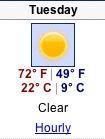While the reporters assigned to presidential candidates are condemned to a mix of grind and hype, reporters who get the chance to survey the country often come up with the best stories. Interviewing voters, sampling local opinion, sketching the political geography, they write the field reports, a ubiquitous genre of its own. No self-respecting election-time newspaper is complete without one.
A lot of them, of course, end up being cookie-cutter stuff: a little bit of this, a little bit of that, and done is the day’s work. Here’s a few from the last couple of days I thought more interesting (h/t to the Electoral Map, where I think I found most of these on the “Morning Reading Lists”). The common thread: Obama’s chances to win over red states or counties.
Battling on the Other Side’s Turf
Washington Post
1 November
Best of the bunch: in-deph local flavour from Southside Virginia.
Heartwarming? Yes; moving stories, a hopeful narrative, characters who feel real and alive. Feeling that the reporter understands the local scene? Pretty high. Strategic survey? Not so much; demographic analysis doesnt take much space here. Evocation of historical legacies, racial and/or industrial? Present. Nuanced? Yes. Topical? Yes – US Rep. Virgil Goode, portrayed here as a well-established incumbent, is unexpectedly facing a tight race, according to the latest polls.
Why the New Virginia Is Leaning Toward Obama
Time
27 October
Timely dispatch from exurban Prince William County.
Heartwarming? Not so much. More of an analytical take, and what anecdotes are there are fairly depressing. Feeling that the reporter understands the local scene? High enough; he studied the numbers and knows where to look. Strategic survey? Yes. The choice of location itself is an attempt to pinpoint the very frontier zone where the elections will be decided. Evocation of historical legacies, racial and/or industrial? Not so much. Nuanced? Yes. Topical? There’s the account of a fearmongering McCain coordinator, but you might have seen it already.
Obamalina
The Nation
22 October
Long review of how the Obama campaign made North Carolina into a toss-up state.
Heartwarming? In a combative way. Fuelled more by awe at the campaign’s success than touching personal anecdotes. Feeling that the reporter understands the local scene? High. He’s from there and he’s got the political scars to prove it. Strategic survey? Yes: it’s all about pinning down the overall Obama strategy and why it’s successful (“it’s the economy, stupid”). Evocation of historical legacies, racial and/or industrial? Yes, but of the weary rather than wistful type. Nuanced? Not so much. Topical? No immediate hook beyond the electoral fate of the state itself.
Westmoreland County up for grabs
Pittsburgh Post-Gazette
28 October
Gritty impressions from a Pennsylvanian county that went for Bush and loved Hillary.
Heartwarming? Not really. The news is depressing – meet the working class McCain Democrats. But the people are real. Feeling that the reporter understands the local scene? Mwah. You keep wanting her to dig a little deeper. Strategic survey? Not so much. Though the description of how the polarisation between high-income, Republican subdivisions along Route 30 and low-income, Democratic riverside settlements are all muddled up this year should rouse the political geographer in you. Evocation of historical legacies, racial and/or industrial? Some wistful type of the latter. Nuanced? Fairly. Topical? Considering McCain’s decision to stake his fate on Pennsylvania and the racial/cultural resentments there, yes.
Continue Reading »



 Cleveland Plain Dealer Data Central
Cleveland Plain Dealer Data Central


